Mohammad Javad Emadi
On Age of Information and Energy-Transfer in a STAR-RIS-assisted System
Dec 05, 2023Abstract:Battery-limited devices and time-sensitive applications are considered as key players in the forthcoming wireless sensor network. Therefore, the main goal of the network is two-fold; Charge battery-limited devices, and provide status updates to users where information-freshness matters. In this paper, a multi-antenna base station (BS) in assistance of simultaneously-transmitting-and-reflecting reconfigurable intelligent surface (STAR-RIS) transmits power to energy-harvesting devices while controlling status update performance at information-users by analyzing age of information (AoI) metric. Therefore, we derive a scheduling policy at BS, and analyze joint transmit beamforming and amplitude-phase optimization at BS and STAR-RIS, respectively, to reduce average sum-AoI for the time-sensitive information-users while satisfying minimum required energy at energy-harvesting users. Moreover, two different energy-splitting and mode switching policies at STAR-RIS are studied. Then, by use of an alternating optimization algorithm, the optimization problem is studied and non-convexity of the problem is tackled by using the successive convex approximation technique. Through numerical results, AoI-metric and energy harvesting requirements of the network are analyzed versus different parameters such as number of antennas at BS, size of STAR-RIS, and transmitted power to highlight how we can improve two fold performance of the system by utilizing STAR-RIS compared to the conventional RIS structure.
Secrecy Rate Analysis of STAR-RIS in Presence of Energy Harvesting Eavesdroppers
Sep 24, 2022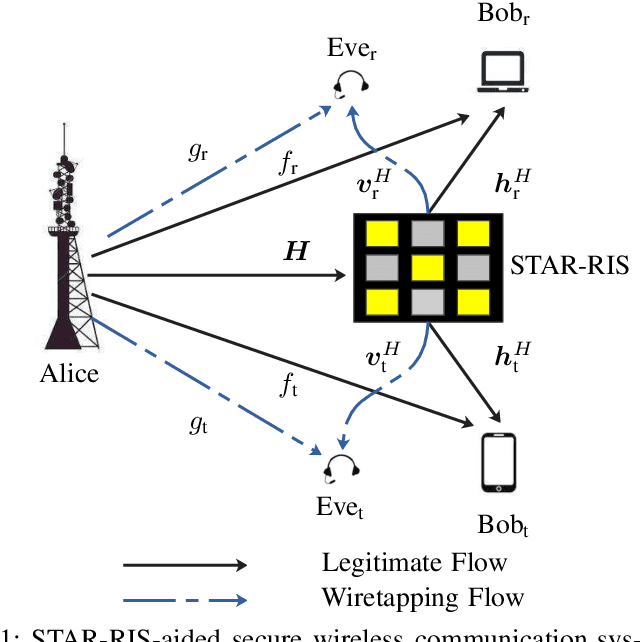
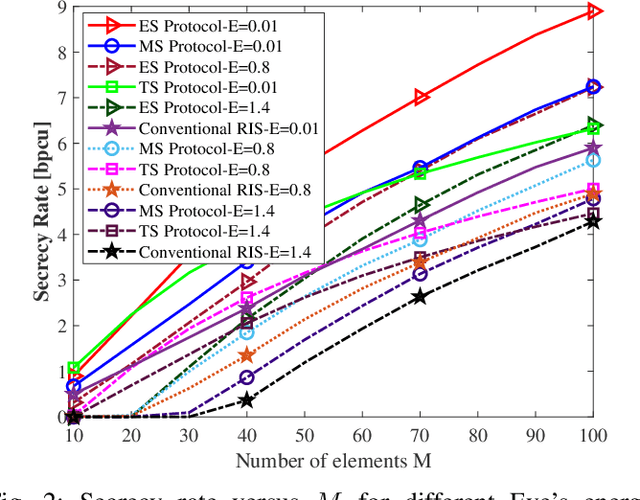
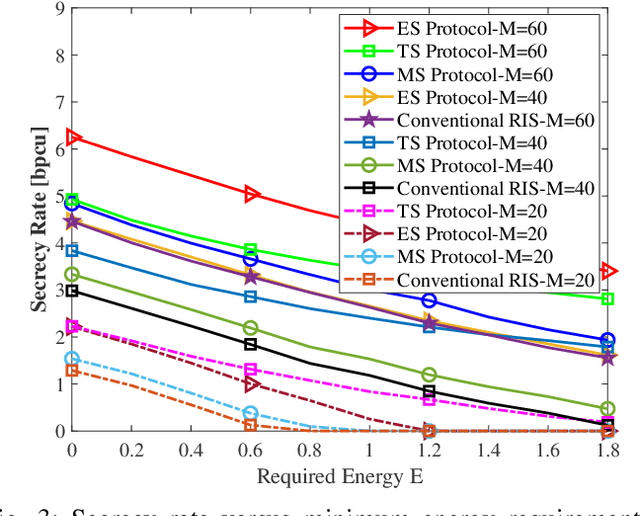
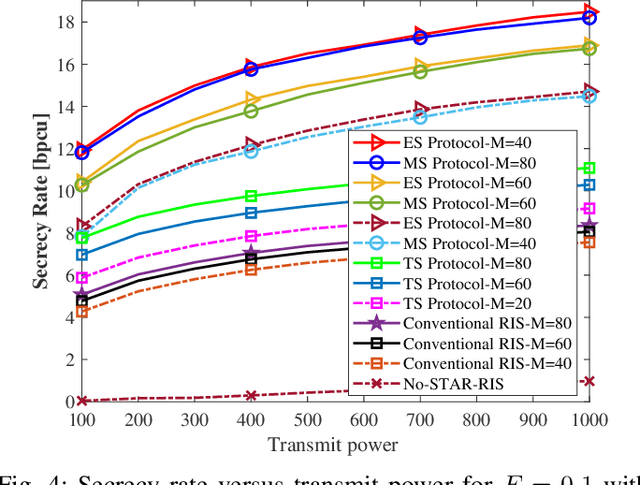
Abstract:This work peruses a simultaneous transmitting and reflecting reconfigurable intelligent surface (STAR-RIS) based wireless system wherein untrusted energy harvesting nodes wiretap the legitimate signal. The achievable secrecy rate and the harvested energy for multicast communication are computed as functions of STAR-RIS transmission and reflection coefficients (TARCs). Thus, to maximize the secrecy rate while satisfying the minimum required harvested energies, the non-convex optimization problem is investigated. By using the Dinkelbach transformation and semi-definite relaxation technique, the optimization problem is transformed into a convex problem. Eventually, the numerical results are reported to specify the effects of the size of the STAR-RIS and optimizing its TARCs elements on magnifying the secrecy rate-energy harvesting region.
Performance Analysis of Uplink Optical Wireless Communication System in Presence of STAR-RIS
Sep 20, 2022



Abstract:Recently, reconfigurable intelligent surface (RIS) has gained research and development interests to modify wireless channel characteristics in order to improve performance of wireless communications, especially when quality of the line-of-sight channel is not that good. In this work, for the first time in the literature, we have used simultaneously transmitting and reflecting RIS (STAR-RIS) in non-orthogonal multiple-access visible light communication system to improve performance of the system. Achievable rates of the users are derived for two data recovery schemes, single-user detection (SUD) and successive interference cancellation (SIC). Then, sum-rate optimization problem is formulated for two operating modes of STAR-RIS, namely energy-splitting and mode-switching cases. Moreover, a sequential parametric convex approximation method is used to solve the sum-rate optimization problems. We have also compared energy-splitting and mode-switching cases and showed that these two modes have the same performance. Finally, numerical results for SUD and SIC schemes and two benchmarking schemes, time-sharing and max-min fairness, are presented and spectral- and energy-efficiency, number of STAR-RIS elements, position of users and access point are discussed.
Resource allocation of STAR-RIS Assisted Full-Duplex Systems
Sep 18, 2022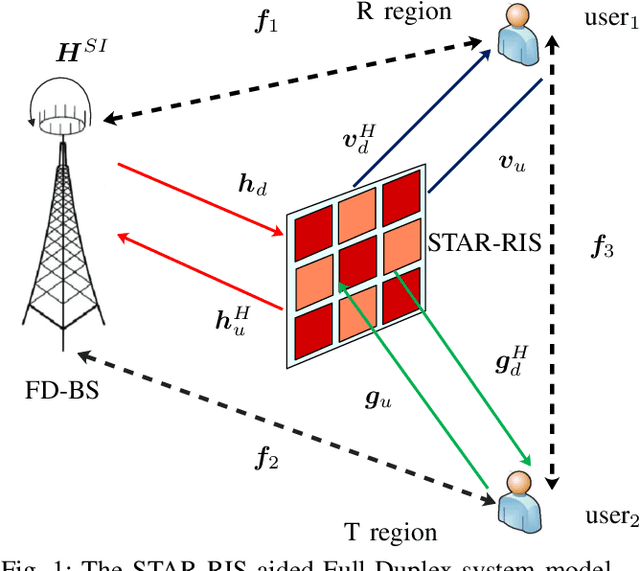
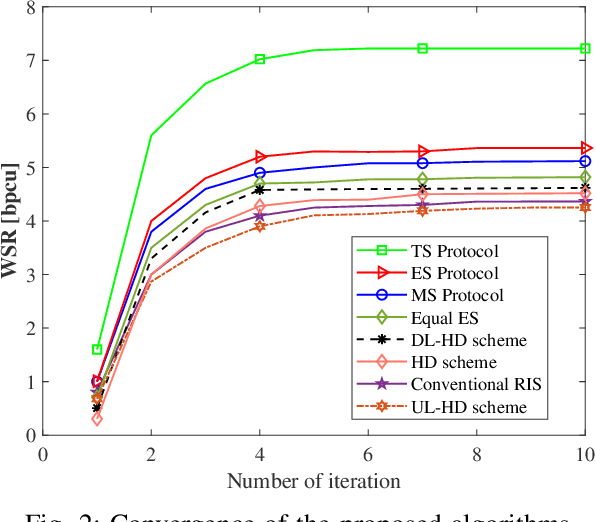
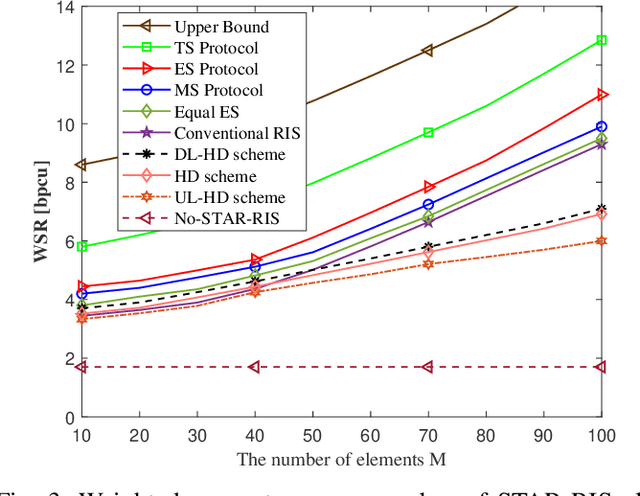
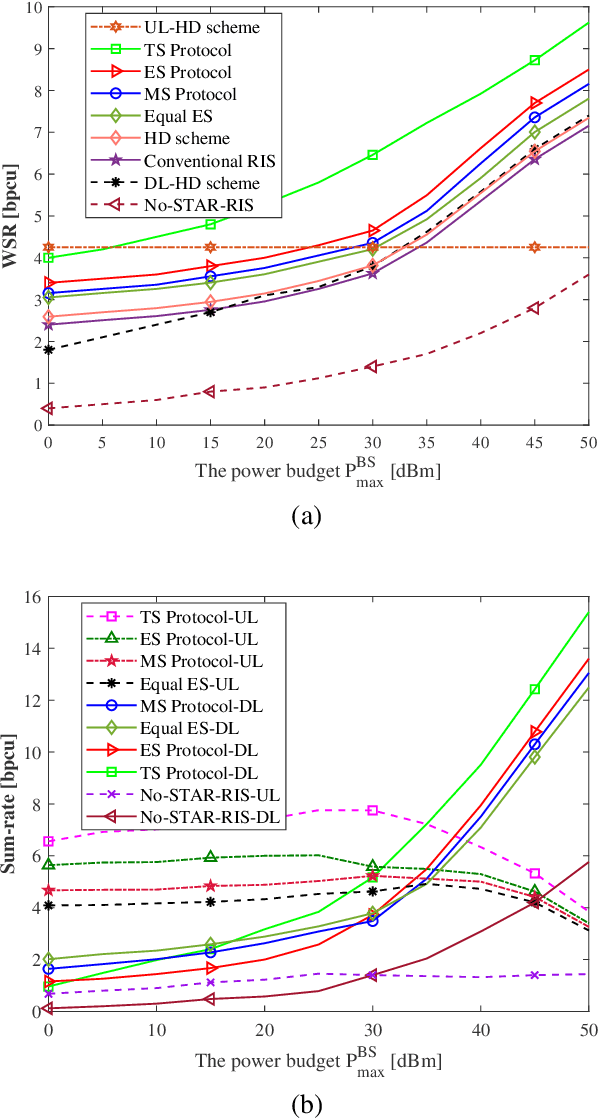
Abstract:Well-designed simultaneously transmitting and reflecting RIS (STAR-RIS), which extends the half-space coverage to full-space coverage, incurs wireless communication environments to be smart and reconfigurable. In this paper, we survey how STAR-RIS affects the performance of full-duplex communication systems with the presence of full-duplex users, wherein the base station (BS) and the uplink users are subject to maximum transmission power constraints. Firstly, the weighted sum-rate (WSR) is derived as a system performance metric. Then, we formulate the resource allocation design into an equivalent weighted minimum mean-square-error form and then transform it into several convex sub-problems to maximize the WSR as an optimization problem which jointly optimizes the beamforming and the combining vectors at the BS, the transmit powers of the uplink users, and phase shifts of STAR-RIS. Although the WSR optimization is non-convex, an efficient iterative alternating procedure is proposed to achieve a sub-optimal solution for the optimization problem. Secondly, the STAR-RIS's phase shifts are optimized via the successive convex approximation technique. Finally, numerical results are provided to explain how STAR-RIS improves the performance metric with the presence of full-duplex users.
High-Speed Trains Access Connectivity Through RIS-Assisted FSO Communications
Oct 25, 2021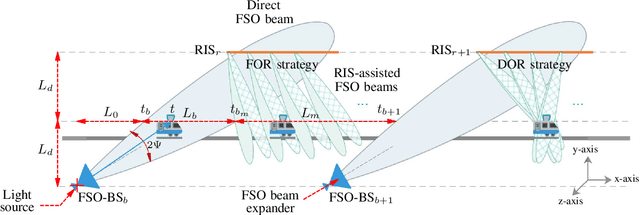
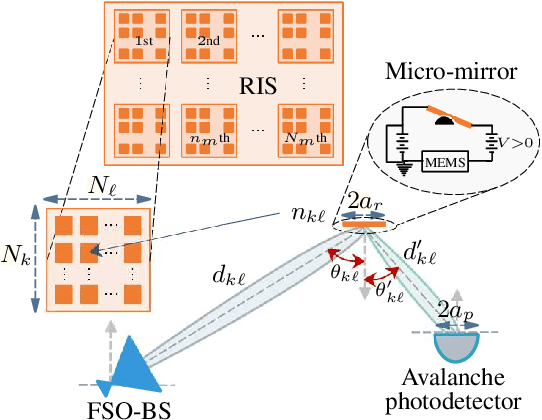

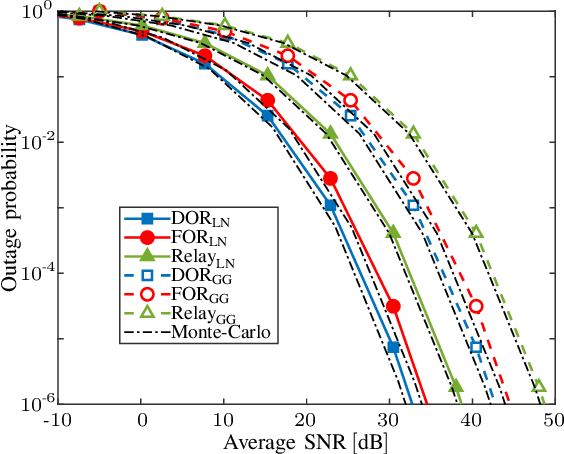
Abstract:Free-space optic (FSO) is a promising solution to provide broadband Internet access for high-speed trains (HSTs). Besides, reconfigurable intelligent surfaces (RIS) are considered as hardware technology to improve performance of optical wireless communication systems. In this paper, we propose a RIS-assisted FSO system to provide access connectivity for HTSs, as an upgrade for the existing direct and relay-assisted FSO access setups. Our motivation is mainly based on well-proven results indicating that a RIS-assisted optical wireless system, with a large enough number of RIS elements, outperforms a relay-assisted one thanks to its programmable structure. We firstly compute the statistical expressions of the considered RIS-assisted FSO channels under weak and moderate-to-strong fading conditions. Then, the network's average signal-to-noise ratio and outage probability are formulated based on the assumed fading conditions, and for two fixed- and dynamic-oriented RIS coverage scenarios. Our results reveal that the proposed access network offers up to around 44% higher data rates and 240% wider coverage area for each FSO base station (FSO-BS) compared to those of the relay-assisted one. The increase of coverage area, on average, reduces 67% the number of required FSO-BSs for a given distance, which results in fewer handover processes compared to the alternative setups. Finally, the results are verified through Monte-Carlo simulations.
UAV-Assisted Underwater Sensor Networks using RF and Optical Wireless Links
Apr 27, 2021



Abstract:Underwater sensor networks (UWSNs) are of interest to gather data from underwater sensor nodes (SNs) and deliver information to a terrestrial access point (AP) in the uplink transmission, and transfer data from the AP to the SNs in the downlink transmission. In this paper, we investigate a triple-hop UWSN in which autonomous underwater vehicle (AUV) and unmanned aerial vehicle (UAV) relays enable end-to-end communications between the SNs and the AP. It is assumed that the SN--AUV, AUV--UAV, and UAV--AP links are deployed by underwater optical communication (UWOC), free-space optic (FSO), and radio frequency (RF) technologies, respectively. Two scenarios are proposed for the FSO uplink and downlink transmissions between the AUV and the UAV, subject to water-to-air and air-to-water interface impacts; direct transmission scenario (DTS) and retro-reflection scenario (RRS). After providing the channel models and their statistics, the UWSN's outage probability and average bit error rate (BER) are computed. Besides, a tracking procedure is proposed to set up reliable and stable AUV--UAV FSO communications. Through numerical results, it is concluded that the RSS scheme outperforms the DTS one with about 200% (32%) and 80% (17%) better outage probability (average BER) in the uplink and downlink, respectively. It is also shown that the tracking procedure provides on average 480% and 170% improvements in the network's outage probability and average BER, respectively, compared to poorly aligned FSO conditions. The results are verified by applying Monte-Carlo simulations.
 Add to Chrome
Add to Chrome Add to Firefox
Add to Firefox Add to Edge
Add to Edge